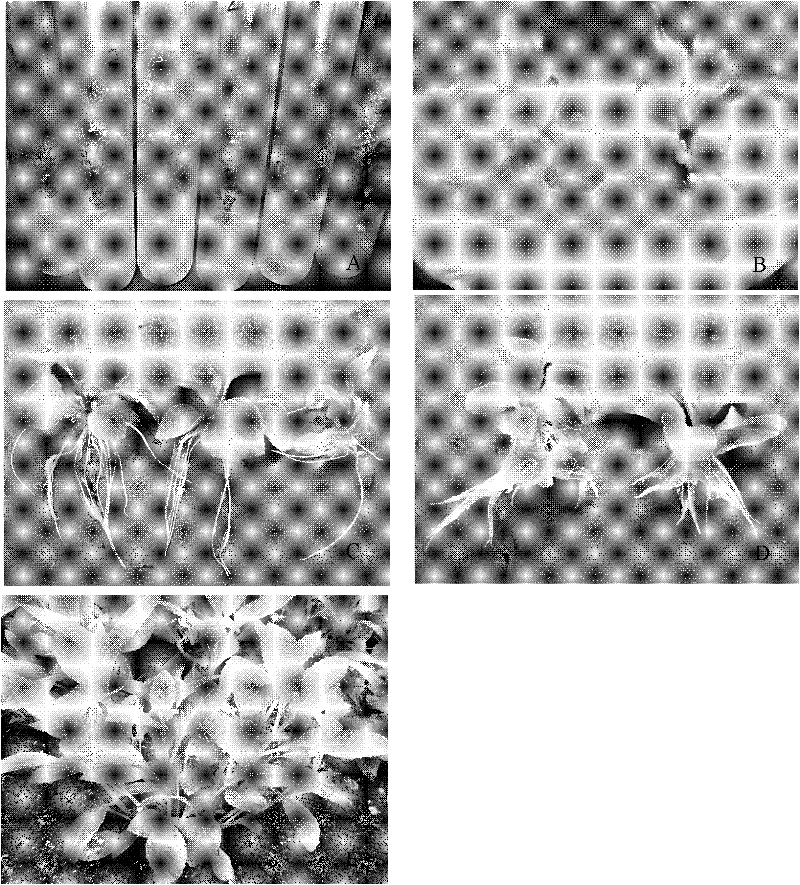Tissue culture method of gynura divaricata
A white-backed Panax notoginseng and tissue culture technology, applied in the field of plant tissue culture, can solve problems such as low reproduction coefficient, and achieve the effects of high reproduction coefficient, good genetic stability and low pollution rate.
- Summary
- Abstract
- Description
- Claims
- Application Information
AI Technical Summary
Problems solved by technology
Method used
Image
Examples
Embodiment 1
[0024] 1) Extraction and disinfection of explants: select young shoots about 20 days old as explants, cut off the leaves (keep the petioles), clean them with an appropriate amount of detergent, and then rinse them with running water for 1 hour. The clean workbench is sterilized with 70% alcohol for 15 seconds and 2% sodium hypochlorite for 12 minutes, rinsed with sterile water for 5 times, placed in an ultra-clean workbench, and cut into 0.5-1.0cm bud stem segments for later use.
[0025] 2) Induction culture: Inoculate the sterilized explants with buds on the stem segment in the ultra-clean workbench in the MS starting medium without any hormones to induce the production of axillary buds. The culture conditions are 25°C±1°C, and the light intensity is About 2000lx, photoperiod is 16h / 8h, obtains the starting seedling (Fig. 1, A) of 5-8cm height after about 20 days;
[0026] 3) Proliferation culture: use the terminal buds and budding stems of the start-up seedlings as explants...
Embodiment 2
[0030]The specific implementation process is the same as example 1. Wherein the rooting medium formula is MS+IBA 0.3mg / L+IAA 0.3mg / L+sucrose 20g / L+agar 6g / L, can take root (Fig. The seedlings are directly transplanted after hardening; the rooting rate reaches 100%; the transplanting survival rate reaches more than 95%.
PUM
 Login to View More
Login to View More Abstract
Description
Claims
Application Information
 Login to View More
Login to View More - R&D
- Intellectual Property
- Life Sciences
- Materials
- Tech Scout
- Unparalleled Data Quality
- Higher Quality Content
- 60% Fewer Hallucinations
Browse by: Latest US Patents, China's latest patents, Technical Efficacy Thesaurus, Application Domain, Technology Topic, Popular Technical Reports.
© 2025 PatSnap. All rights reserved.Legal|Privacy policy|Modern Slavery Act Transparency Statement|Sitemap|About US| Contact US: help@patsnap.com

